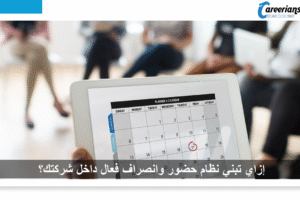
Designing the Annual Training Plan from Analysis to Real Implementation
Designing the Annual Training Plan from Analysis to Real Implementation
Once you’ve completed your Training Needs Analysis as we disscused in the previus topic ( Training Needs Analysis: The Cornerstone of Building an Effective Development Plan ) and clearly identified the performance gaps, the next question naturally follows:
What do we do with all these insights?
The answer lies in building your Annual Training Plan — the roadmap that transforms analysis into real action.
In many medium-sized companies across Egypt and the Gulf, training still happens spontaneously: one department requests a workshop, another joins an external course, and HR records it as a “development activity.”
But without an organized annual plan, the efforts stay scattered, the impact remains limited, and the ROI goes unnoticed.
This article walks you through a practical, step-by-step process to design a solid Annual Training Plan that aligns with your strategy, maximizes your budget, and drives measurable business results.
What Is an Annual Training Plan?
An Annual Training Plan (ATP) is a structured document that defines all learning and development activities planned for the coming year, based on your TNA results.
It includes:
-
The company’s learning objectives
-
Target employee groups
-
Planned training programs and delivery types
-
Timelines and budget allocation
-
Implementation responsibilities
-
Evaluation methods
In other words, it’s the bridge between analysis and action — between identifying what needs to improve and actually making it happen.
Why It’s Essential for Growing Companies
-
Transforms training into a system, not random efforts
It organizes learning activities around clear priorities. -
Optimizes budget use
You invest in the right programs with the highest impact. -
Clarifies priorities across departments
Each team knows exactly what’s planned and why. -
Brings transparency
Employees see the company’s commitment to their development. -
Enables accurate tracking and ROI measurement
Because everything is planned, monitored, and evaluated.
Companies with an organized ATP report higher employee engagement and lower turnover because development stops being a “one-time event” and becomes an ongoing process.
Step-by-Step: How to Build a Practical Annual Training Plan
1. Review Your TNA Results
Start by revisiting the data you collected in your Training Needs Analysis.
Ask key questions:
-
Which gaps have the biggest impact on business goals?
-
What skills are most urgent to develop?
-
Which programs can be delivered internally vs. externally?
Example:
A medium-sized food production company in Saudi Arabia discovered through TNA that supervisors lacked communication and food-safety management skills.
So the L&D team designed a 12-month plan with monthly supervisory workshops and quarterly food-safety sessions for plant staff.
2. Define the Year’s Learning Objectives
Set clear, measurable learning goals that align with business priorities.

Examples:
-
Improve frontline supervision efficiency by 25%.
-
Reduce customer complaints by 15%.
-
Prepare 5 team leaders for future managerial roles.
Make sure your objectives follow the SMART model — Specific, Measurable, Achievable, Relevant, and Time-bound.
3. Convert Gaps into Training Programs
Each gap identified in your TNA should translate into a specific learning program.
| Gap | Training Program | Target Group |
|---|---|---|
| Weak communication skills | Effective Communication Workshop | Customer Service Team |
| Lack of leadership capabilities | Supervisory Skills Development | Team Leaders |
| High operational errors | Quality & Process Control Training | Production Staff |
Every program should specify:
-
Objective and expected outcomes
-
Target audience
-
Delivery format
-
Duration and core topics
4. Choose the Right Delivery Methods
Selecting the proper delivery method can make or break the plan’s success.
The main options are:
-
In-house training – Ideal when you have internal expertise or customized content.
-
External training – Best for specialized programs or certifications.
-
E-learning – Efficient for general knowledge or awareness sessions.
-
Blended learning – Combines classroom and digital training, offering flexibility and engagement.
Careerians Tip:
Many Gulf companies found blended learning the most effective — lower cost than full in-person programs, but with better retention than e-learning alone.
5. Create the Annual Schedule
Break the year into quarters or months and organize training accordingly.
| Quarter | Program | Audience | Method |
|---|---|---|---|
| Q1 | Supervisory Skills | Production Supervisors | In-house |
| Q2 | Customer Service Excellence | Sales & Call Center | External |
| Q3 | Health & Safety | Technical Teams | Internal |
| Q4 | Creative Thinking & Innovation | Mid-level Managers | Online |
A flexible schedule helps you adapt quickly to changes during the year — new priorities, staff turnover, or market shifts.
6. Plan the Budget
Budgeting is where planning becomes realistic.
Include:
-
Trainer or provider fees
-
Venue and logistics costs
-
Platform subscriptions (for online learning)
-
Travel and accommodation (if applicable)
Most medium-sized organizations allocate 1%–3% of total payroll for annual training.
Tracking spending against this budget monthly keeps HR financially aligned with management expectations.
7. Assign Roles and Responsibilities
Everyone involved must know their part in making the plan happen.
-
HR/L&D team: Plan, coordinate, monitor, and evaluate.
-
Line managers: Nominate employees and reinforce learning on the job.
-
Top management: Approve the plan and support its implementation.
Clear responsibility structures build accountability and ensure follow-through.
8. Establish a Monitoring & Evaluation System
Evaluation shouldn’t happen only after training — it must be built into the plan.
Use the Kirkpatrick 4-Level Model:
-
Reaction: Did participants find the training useful?
-
Learning: Did they gain new knowledge or skills?
-
Behavior: Are they applying what they learned at work?
-
Results: Did the organization see measurable improvement?
Leading Gulf companies now link training outcomes directly to departmental KPIs — for instance, measuring how customer satisfaction or production accuracy improved after specific programs.
Real-World Example
A mid-sized construction company in Egypt discovered through TNA that project engineers lacked scheduling and coordination skills.
Their Annual Training Plan included:
-
Q1: MS Project training for site engineers
-
Q2: Time-management workshop for supervisors
-
Q3: Cross-department communication session
-
Q4: Leadership development for middle management
Outcome:
Project delivery time improved by 18%, and interdepartmental conflicts decreased significantly.
That’s how a structured annual plan converts training into measurable business improvement.
Using Digital Tools to Manage Your Plan
Digital transformation has made implementing an ATP much easier, especially for medium-sized businesses.
Popular tools include:
-
Google Sheets / Excel Dashboards – Simple scheduling and cost tracking
-
Learning Management Systems (LMS) – Attendance, completion, and evaluation tracking
-
Power BI or Zoho Analytics – Visual performance dashboards
-
Microsoft Teams / Zoom – Seamless virtual delivery
The goal is to keep your plan dynamic and data-driven, not a static file stored in HR folders.
Challenges You Might Face
-
Changing business priorities – Keep your plan flexible and review quarterly.
-
Low managerial involvement – Tie managers’ performance evaluation to team development outcomes.
-
Difficulty measuring impact – Use pre/post assessments and performance metrics.
-
Limited budget – Focus on internal trainers and blended delivery to reduce costs.
Building a Culture of Continuous Learning
An Annual Training Plan is not just a document — it’s a mindset.
When employees see that every training program connects directly to their work and career path, learning becomes part of the organization’s DNA.
This cultural shift is what differentiates a “company that trains” from a company that evolves.
Careerians Insight
Your Annual Training Plan is the practical translation of your development vision.
It’s how you turn strategy into skill — and goals into performance.
Start small: pick a few critical programs, define clear objectives, and evaluate results honestly.
Step by step, you’ll transform learning from an expense into a growth engine that drives your company forward.




